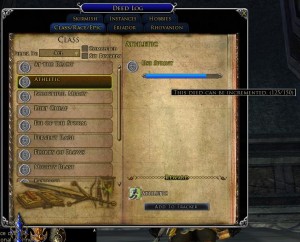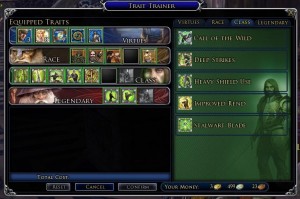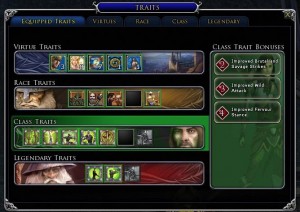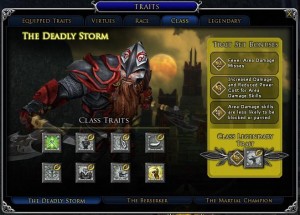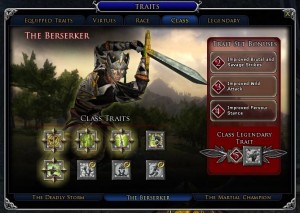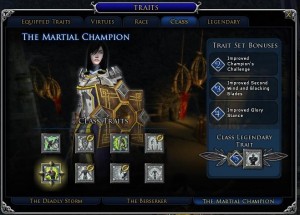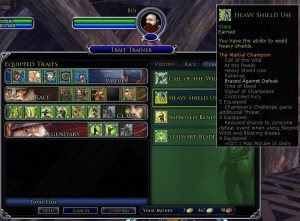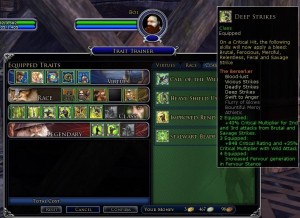Category Archives: Games
Computer Games – part 2
This post started off short, but grew so I had to break it up into different posts. You can check out part 1 here, and you can see all the articles in this series here.
Commodore VIC-20
The only thing I really remember about the VIC-20 is that by the time the C64 came out (the VIC-20 was still on sale) it was mentioned in slightly embarrassed tones. “Oh yeh, I have a Commodore [vic20]”.
Commodore 64
The C64 came out a few months after the Spectrum but it was far more powerful. The graphics and sound were more powerful than IBM PC clones at the time, and it sold about 30 million units. While it was known for it’s games, the machine was also used by industry and science.
I never owned one, but I knew people who did, and I played games on the C64 a few times. For the most part they looked and sounded better than the Spectrum, but game-play tended to be translated directly across, so bad Spectrum games turned out to be bad C64 games. Sometimes limiting features in the Spectrum hardware meant the same game on the C64 was significantly better, but for the most part it was generally the look and sound of the games. At the time, I didn’t really appreciate the price difference (~£400 for a C64 and ~£175 for a 48K Spectrum) and in the UK the price difference meant the Spectrum was dominant for quite a while.
I think Uridium is a good example of how the C64 was superior in many ways to the Spectrum – a more colourful and exciting sounding game on the C64.
Commodore 64 version
Spectrum version
It’s actually quite cool being able to check out the differences between the platforms visually and with audio, because in 1983 all you could do was look at pictures in the magazines and listen to your mates (unless you went around and watched them).
Atari 2600
Before I started writing this I hadn’t really appreciated how old the Atari 2600 was, and hence how dated the games looked. For some reason I half thought it was newer than the 400/800’s, but it was earlier, around the same time as the IntelliVision. I never had an Atari 2600, but a friend from school did (I must have been around 11 or 12 years old). At lunch time we’d go to the chip shop then head to his house to play on his Atari 2600. Or, more often, watch him play. The 2600 had all the classics, Defender, Pitfall!, Pole Position (which I remember playing at lunchtimes).
I remember being really excited about the Atari 2600, it looked so cool, it was such amazing technology and sitting in my friend’s cramped bedroom staring at the amazing sprites it seemed like the future really had arrived.
Looking back, it’s got super-blocky graphics and basic sound. Really, my memory of it was so much better.
BBC Micro B
Ah, the BBC Micro B, it seemed so grown up! I think everyone in my generation met these computers for the first time at school. They seemed to be the defacto standard for educational establishments in the UK. Just as I was getting into my O’Levels, the school started using BBC Micros, and they formed an ‘IT Department’. In our history lessons we used the BBC Micros to play some kind of sea faring game that was intended to teach us the complexity of discovery by sea (having enough rations, for the most part). I remember being taught ‘word processing’ and ‘spreadsheets’ long after I’d learned to write my own on the Spectrum. Mostly we got taught how to use them by the maths teachers, who seemed to be the default IT teachers at the time.
Later, when I was in the 6th form, the Business Studies class had a few of them, and I used to hang out in that class and help with the IT side. I ended up writing a terrible little programme to ‘simulate’ playing the stock market, it had a bunch of companies, and share prices moved in random directions, and you could buy and sell stock. It seemed like the bees knees at the time.
It was also the first time I heard a computer play good music, we had a disc with Eurythmic’s Sweet Dreams on it. It was amazing. We also had a disc with Chuckie Egg and some other stuff, and when I wasn’t helping with the lessons I would sit and quietly collect little piles of chicken feed and some eggs.
Compared to the computer I had at home (still a Spectrum) at the time, the BBC was more sophisticated. It had a floppy disc drive for a start and I was still using tapes on my 48K Spectrum (I never got the later Spectrum models which had discs). I ended up with a rather large collection of floppy discs with various bits of software on them. The keyboard was more industrial as well, I’m sure if you were used to the C64 and similar it was normal, but for a 48K Spectrum owner the BBC Micro was like a real computer keyboard. Programming on the BBC was both easier and more powerful than the Spectrum, and I really took to it (aka the aforementioned share trading thing), and I still remember some of the *FX commands you had to use.
The BBC Micro had a 6502 processor, and I learned my first assembler on that thing. It was also the model we used to learn the Fetch-Execute cycle when I did A Level Computer Science.
All of these things however, pale into insignificance when you realise the true power of the BBC Micro. Micronet and Prestel access. Using a modem, the first time I’d ever seen one, you could connect the BBC Micro to some central service and you could look at information, and, you could play games. More importantly, you could play multi-player games with other people. Real people. At the same time. SHADES. There’s surprisingly little information easily at hand about the original version of SHADES, which is a real shame. But I found it, and I played it. I spoke to real people at the other end of a computer, we talked about treasure and we fought the bad guys. I had an avatar. I was hooked – and that experience would never leave me.
The instant communication with other people, live across the UK, the ability to talk to someone in Manchester while I was in Newcastle was just amazing. To be able to do it while playing a game – well, it was frankly unbelievable.
Long after I’d left school, and while I was working my way through university, the BBC Micro B would rear it’s head again at British Steel Research in Swinden Rotherham. At least one of the departments there were using the BBC Micro to analyse data and carry out experiments. I forget many of the details but I was impressed at the time about the longevity of the thing and how useful it was.
And least it ever be forgotten, the BBC Domesday Project. An early attempt at recording a lot of information on computers and making it available to people. Sadly it’s suffered from technology lifespan issues, but at the time it was ground breaking and an incredible feat.
But for me, the BBC Micro B will be remembered for two things. Chuckie Egg, and talking to someone working in an office in Manchester (a solicitor if I remember, playing a character called Peardrop or something similar, in a fantasy world) while I was sitting in a classroom in Newcastle.
Emulation is the greatest form of flattery
So today, I may or may not have played Defender on a laptop PC, and may or may not have used an emulator to achieve that. I did own an Atari 400 once, and I owned Defender on a cartridge, as already mentioned in another post. The sound that game made, every single sound, is etched into my soul.
Seeing it full size, on a TV (37″) with the sound up loud, well if that had happened, it would have been just awesome.
And if it had happened it would probably have looked and sounded like this.
Computer Games – part 1
I’ve played computer games over the years on a wide range of platforms. I was fortunate enough to get an Atari 400 and a ZX Spectrum in the early 80’s and I’d been playing games a little before that in the arcades. Here’s a brief history of my computer gaming. You’ll notice that until the Wii, I never had or really used a Nintendo system, I don’t know why. I didn’t own all these systems, some of them were owned by friends, others by my school. The list is in no particular order, because my memory isn’t good enough to do that for you. Also, I thought this would start out as a brief list, but as usual, I’ve waffled so it’s now broken up into several posts.
Arcade Machines
I can’t really remember how old I was when I first noticed games in arcades that weren’t just fruit machines (slot machines to the rest of you) or one arm bandits. But I remember where I was. Berwick upon Tweed and ‘The Coast’ (Newcastle, meaning Whitley Bay or Tynemouth). I remember spending more of my pocket money than was healthy in the arcade in The Spanish City in Whitley Bay (yes, of Dire Straits fame). I was never really very good at the games, I never had enough money to play and play and get any good, so I invariably only saw the first couple of levels. In Berwick there was an arcade associated with the holiday camp site we stayed at, and I remember playing Mr. Do! quite a bit and a year or so later Mr. Do’s Castle. By the time I was playing arcade games, I think Asteroids and Defender had already had their day.
For me, the arcade was a special holiday treat mostly, so I didn’t really end up part of the generation that grew up spending their spare time in arcades, a few hours for me every few months in The Spanish City or once a year at Berwick was about my limit. But those games got under my skin and into my head and I’ll never forget the sounds and the flashing lights.
I’ll reel off a few games that stuck in my memory most of all.
- Mr. Do! – as mentioned above, this one and the others in this line were favourites.
- Xevious – I loved this vertical scrolling shooter, out of all the shooters I played this was the only one I was even remotely any good at.
- Defender – I had a love/hate relationship with the arcade version of this, I owned the Atari 400 conversion which I loved and could play for hours, and I never liked how hard the arcade version was in comparison.
- Gorf – who couldn’t love Gorf! For the speech alone.
- Galaxians – my favourite static space shooter.
- Gauntlet – astounding and until I started this list I’d forgotten about it. This and Outrun! were both in the Leisure Centre in Eldon Square in Newcastle, and that’s where I played them in my late teens.
- Commando – I sucked, big time.
- Blasteroids – I remember playing this a lot in The Spanish City, but it was probably only for like 7 minutes once in my entire life, memories are strange like that.
- 1942 – after Xevious this was my favourite vertical scrolling shooter, and I played it quite a lot.
- Missile Command – which reminds me of yet another place I’d forgotten that I used to play arcade games – the local swimming baths had a single arcade game (Missile Command for a long time) in their ‘coffee’ room which overlooked the pool. They had a hot drink vending machine (which also did scalding hot oxo soup), and after swimming for an hour or so I’d head here and spend my locker money on Missile Command.
Atari 400
I think I got an Atari 400 before I got the ZX Spectrum, which also reminds me that I was a bloody lucky kid for a whole range of reasons. I fell in love with the Atari for a couple of reasons. Firstly, it brought that arcade experience I’d had previously, into the house, you wouldn’t believe how excited I was to be playing Space Invaders, PacMan, Defender and Centipede in my own home (on the TV no less!) but secondly, it had a keyboard and you could make it do things. You could get it to make sounds and put images on the TV. I didn’t really know what it was, that it was programming and that it would probably define my entire education and career path, but I knew I liked it. The Atari 400 had both a cartridge system and a cassette recorder. Most of the games I had were on cartridge, and the cassette was for saving things I’d typed in (with my sister’s help) from magazines. I remember spending a couple of days typing in (all in HEX) a donkey kong style game, and moments before we got to save it to tape, the power supply in the back of the Atari 400 (always the Achilles heel) wiggled and the whole thing reset, losing everything we’d done.
So I was probably between 10 or 12 years old when I first learned the lesson of when to backup your data (frequently and often).
The Atari 400 had the classic Atari joystick. A thick square base, single stick and one fire button. When you’re a kid, holding that joystick in one hand meant pushing the corner into the joint between your thumb and your palm. Holding it there for 6 hours while you played Defender with no save game option usually resulted in pain, blisters and a bruise. So as well as teaching me about backups, the Atari taught me about repetitive strain injury and how computers would be making my hands hurt for the rest of my life.
It was a big beast of a machine, with a solid metal cover over the electronics to meet RF emissions regulations, the keyboard was flat and horrible to type on (but we coped), and at least was spill resistant. I still remember the sound the thing made when you first turned it on, a little beep-crunch style noise and the white-noise it made if you opened the cartridge slot without turning it off first. In some ways, the Atari 400 cartridge system spoiled me when I moved to all cassette systems like the ZX Spectrum, where had my instant game starts gone? I do wonder if we’ll see a move away from DVD and Blu-Ray discs for games back towards a solid state solution with the increase in SSD capacity.
I didn’t have that many games for the Atari, they weren’t cheap (compared to other systems), but the ones I did have I loved very much.
- Asteroids – with filled in raster graphics rather than the empty wireframe of the arcade version, this Asteroids conversion looked awesome (honest), and I got pretty good.
- Defender – I played this on the Atari 400 before I ever tried in the arcade, and although the game play was similar, the arcade version was much harder to control. I remember two things, playing it for lots of hours in a row and using my foot to press the space bar to activate the bomb (since the joystick only had one button).
- Centipede – like the others, a classic arcade game with simple gameplay that kept me pressing the fire button.
- Star Raiders – probably the most complex computer game I’d ever seen, and a pre-cursor to Elite, Wing Commander, and many first person style games. This game kept me absorbed for many, many hours.
I remember spending many hours in Fenwick’s in Eldon Square looking through their games in their huge, new computer games section (which eventually moved or shrank and the area was re-used as their sports section).
Sinclair ZX81
I didn’t own a ZX81, and I can’t remember who did the own the one I used (sorry!), but I remember playing Horace Goes Skiing on the thing and being blown away by the crisp, engaging graphics and simple, responsive and engaging gameplay 😉 Anyway, I don’t really remember much more about the ZX81 other than it was tiny, especially compared to the tank-sized Atari 400.
Sinclair ZX Spectrum
I had a Sinclair ZX Spectrum 48k. I did not own a Commodore 64. I wonder if people these days feel the Sony vs. Nintendo or PC vs Mac or Sega vs Anyone platform wars are vicious? You want vicious, you should have seen the C64 vs. Speccy platform wars of the 80’s. Only a tiny minority of people could afford to be in both the C64 and Speccy camps, you had one, but you didn’t have both, and while in our hearts we knew the C64 was technically superior we also knew what that meant in truth. What it resulted in. What it gave us. It gave us developers (on the ZX Spectrum) who worked magic on inferior hardware with idiosyncratic graphics and terrible sound. Worked magic and twisted the limits in every way they could imagine to give us high quality, engaging, terrific games that lasted for months. We got multi-channel sound out of a single speaker, not because the hardware supported it but because crazy programmers made it happen with trickery and pokery the likes of which has never been seen since. Tired of the static loading screen on games which took 5 minutes to read off tape? Fear not – ninja coders discovered ways of loading games and displaying animated or interactive screens at the same time. And so on.
On top of the software tricks that allowed the Spectrum to behave in ways it was never designed to do, there were a million peripherals which moved it from a little computer to a flexible and useful tool with thousands of uses.
The Atari 400 had wetted my appetite for writing software, the Spectrum turned me into a programmer, showed me that software was like poetry and that it could be both functional and beautiful in its own right.
But, this post is supposed to be about games, and the Spectrum had literally thousands. Despite the limitations of the hardware, the Spectrum had a version of just about every arcade classic it was possible to port, and there were very few titles which appeared on the C64 but not the Speccy. Most games were played with the keyboard, although if you could afford a joystick and an interface you could sit back in style (I opted for a Kempston micro-switch joystick, you can see a picture here). Some people preferred QAOP (up, down, left, right) while others were fans of QWPL (left, right, up, down).
It would take me days to write down the Spectrum games I remembered, and even longer to discover the ones I’d forgotten, and so here’s a short list which in no way at all does the system any justice.
- Skool Dayz – I was never very good at it, but I remember there being some controversy around the game, and it was okay to play.
- Jet Set Willy – a classic, seriously, and I’m still humming that damn tune. (If I was a rich man …..)
- Manic Miner – anyone who’s never played this should, and anyone who’s ever played it will recognise this.
- Tranz-Am – memorable not for the gameplay alone, but because you could play it two player on the same keyboard. On a 48K Spectrum, which is about half the size of a regular full size keyboard these days. Two kids, both using the same keyboard. ‘mazing.
- JetPac – simple, addictive, fun.
- Uridium – amazing side scroller with just awesome music and graphics!
- Lightforce – there was a lot of hype around this game, thanks to some amazing trick which meant the colours on the sprites didn’t bleed together like they did on all other Spectrum games. It turned out it was just clever sprite design, but none-the-less it sold well as a result. Check out the article in Crash magazine.
- Ah man there’s so many, Atic Atac, SaberWulf, Knight Lore, Bard’s Tale, Spy vs. Spy (split screen!), Elite, Arkanoid, and on and on and on.
Check out Your Sinclair’s top 100 list here (courtesy of World of Spectrum). World of Spectrum has their own top 100 here.
Looking around on the web for various sites relating to old computer systems and games machines, the Sinclair ZX Spectrum appears to have one of the largest followings of any old system. I’m not surprised, it endured and grew and left a generation of owners.
I thought I’d write more about the Spectrum, but it’s hard because there’s just so much I could write, I don’t know how to limit it. If I start it’ll just go on for ever so this will have to do. Suffice to say it’s the computer system I have fondest memories of.
Anyway, I managed to get through four systems, and I’m already over 2000 words. I’ll save the others (and there are many to go) for another post or two. Still to come, Commodore VIC-20, Commodore 64, Atari 2600, BBC Micro B, Acorn Archimedes, Amstrad PC1512, Amstrad PC1640, Sega Mega Drive (Sega Genesis), Microsoft XBox, Nintendo Wii, Sony Playstation 2, Sony Playstation 3, and all manner of PC’s.
The Guild + Auto-Tune device = awesome review of season 3
Loved this, found it over at WWdN
I laugh at your DRM and present – the Lenslok
Continuing my nostalgia kick, I was thinking about copy protection in the world of 8 bit computers. Games for the ZX Spectrum and the Commodore 64 were on audio tape, recorded as sound (in Europe, in the US I think the Commodore was more commonly used with diskettes). Anyway, this presented an excellent opportunity for up and coming software pirates (aka kids with only a small amount of pocket money). One kid would buy the game, and then it was easy using tape-to-tape copying to give your friends copies as well.
This resulted in a number of counter measures, in a software piracy war that would continue until the present day. But in those days, it was a far less technical war. There were a number of methods introduced. For the ZX Spectrum, different modulations were tried with the tape content, essentially trying to ensure that only original recordings were of the right quality to load, while copies of the audio would fail. This was less successful than hoped, as tape-to-tape copying equipment developed rather quickly as well. Some schemes only worked because it wasn’t easy to share information around quickly, for example, Jet Set Willy was supplied with a colour card and in order to play, you needed to enter the colour corresponding to a prompt.
While it was hard to create colour photocopies at the time, and not exactly trivial to write up and share a full list of the colours, it turned out to be rather easy to circumvent the copy protection and the solution was actually published in a magazine at the time (Your Computer, Issue 6, June 1984). It was a different age back then.
However, for many Spectrum owners, the most frustrating scheme was the Lenslok. Anyone who had the necessity to use them knew how unreliable they were, and they quickly became one of the most hated copy protection schemes around – not because it worked – but because even for legitimate owners, it sometimes didn’t work. That’s a lesson for the DRM boys. The Lenslok was a plastic prism, which you used to unscramble text on the screen before entering it to play the game (most notably, Elite). However, it had to be calibrated to your TV every time (to get the size right) and wasn’t the easiest thing in the world to use.
And it still didn’t provide 100% reliable protection, because interfaces for the Spectrum allowed people to save games to tape at a point past the copy protection scheme and share them with their friends anyway – just another failed copy protection scheme from the games industry.
So when you curse your DRM, or laugh at the attempts to fix a social issue with a technical solution, just think back to those of us squinting at our black and white TV screens from an inch away, through a plastic prism, so we could play an 8 bit pre-cursor to Modern Warfare 2.
Prepare to Launch
I’ve waxed nostalgic about computers before, and I’m going to do so again. This time, it’s the fault of team members at work. After a short conversation about The Hobbit (movie, lack of progression), a colleague reminded me of the ZX Spectrum adventure game based on the book. Oddly, we both remembered getting stuck in the same place. That in itself isn’t amazing, it was obviously the place to get stuck when you played The Hobbit, what’s amazing is that it’s approaching 30 years since the game was released (1982), and it’s around 25 years or so since we played it.
25 years. And we still remember where we got stuck. Anyway, that led to a range of discussions of the humble ZX Spectrum, including Sabre Wulf and how you can’t download it for emulators because the copyright holders still exist and refuse to allow it (in case they want to cash in on their 25 year old intellectual property). I also, badly, tried to do an impression of the first digitised speech I heard in a computer game. It was a game on the ZX Spectrum, and I knew it was some kind of space game, but couldn’t remember the name. I’ve been quoting the phrase ‘prepare to launch’ in a stupid, static-laden voice since I was in my teens. I still do it now if I hear that phrase on the TV or talk about the first speech I heard in a game.
A couple of years ago, I blogged about Wing Commander (here) and how I’m still quoting stuff from my early life – and this Spectrum game was no different.
Luckily, we have The Internet, and a quick bit of googling and I found the game. Death Star Interceptor. Amazingly, the game had a tie-in license with Star Wars, and uses music and themes from the film (including the Death Star). Essentially you have to launch your interceptor (which is annoyingly hard, straight off the bat), shoot down some tie-fighters and then fly along a trench to blow up the Death Star. I can’t remember if I ever beat the game or not, or if you even can. But I do remember the speech. And thanks to a little emulator, now you can too. Have a listen, see if my impression is any good (click the text!)
I just spent 10 minutes playing the game, and after a few minutes of getting hit by flying tie-fighters I got a little better. I didn’t get better because I was learning how to play, I got better because I was remembering how to play! From 25 years ago. I still remember how to play this bloody game. I sometimes can’t remember what I ate for dinner yesterday but I can sure as hell remember how to play an obscure shoot-em-up from a Spectrum game in the mid 80’s. Nice.
I’ve got a real computer nostalgia kick going on right now, I’m sure there’ll be more blog posts to come!
Random MMO Frustrations: #1 – varying difficulty for class based quests
I find a few things about MMO game design frustrating. One thing that’s on my mind at the moment is when every class has to do something to get a class specific reward, but those somethings vary in difficulty (often by a great amount). A specific example would be the Moria Class Quests for Legendary Traits in the Lord of the Rings Online.
The rewards are obtained by doing a little quest line, which leads up to a kill in one of the Moria 6-man instances. Each of the instances in question supports two of the classes (who need different kills). So, each class has one quest, that one quest takes place in one of the instances, two classes share an instance but have different creatures in that instance.
Now when the designers put the instances together, they made them vary in difficulty. This is fine, I think MMO content should vary, some should suit certain style groups, and some should encourage people to look at their gear or their skills (or in Lord of the Rings online, their traits, etc.)
The problem comes when class X has no choice but to do instance Y to get their reward, while class B can do instance C. If instance C is generally considered to be easier than instance Y, you’re going to generate unhappiness. Easier of course is subjective. Maybe it’s easier because the players have a lot of Hunters and no Guardians, or because their general tactics suit that particular instance. But it doesn’t really matter why it’s easier, or even harder, that variation without choice causes friction.
Here’s a live example. Our little group is struggling to beat one of the encounters in the Forges instance, we need to complete all the bosses so that we can get to the final mob for the Loremaster quest. However, in the 16th Hall, once we’d worked the wrinkles out, we beat the whole instance quite easily, and not only that, but we only needed to kill the 1st boss to get to the Runekeeper quest mob.
There’s no good in-game reason for this. It just causes friction. Yes, it means you are forced to see all the instances if you want to see all the class quests, but being forced into stuff is never good. It’s bad design. I suspect it went like this. Developer X designs a bunch of instances (or more likely, several developers do), and they vary in toughness and mindset. This is find. Deveoper Y is tasked with putting in the rewards for class traits somewhere in the game, and decides to put them into the instances, they pick them almost at random, and place the final mobs at random (behind boss 1, at the start, at the end) without really considering the different difficulties this will impose.
The instances and the quests were not designed together.
It’s bad design in my view. And it could be easily avoided. Each class could be told to ‘bring the head of a terror from the depths of Moria’. The final boss in each instance could then drop 1 or 2 heads (or ears, or whatever body part makes sense). People can then choose the instance they want to do to get their reward. Yes, it means people can pick the ‘easy’ instance, but then designers should strive to make them all challenging. But it would reduce the friction and ensure different classes didn’t get the short or long stick.
This is only one example, there are many (like the 2.0 Epic quests in EverQuest, where the final fights varied widely in difficulty, not to mention the run-up quests and mobs).
Content difficulty should always vary, but if you’re going to design a bunch of quests, one per class, then you should ensure each class can choose to follow an equally difficult route to their reward.
Call of Duty: Modern Warfare 2
Yes, I know I’m late to the party (borrowed it from a friend) and yes, I know it’s been said before, and yes, I know the game is really a vehicle for months of online player vs player gun toting action, and finally, yes I know that I could repeat the single player campaign on different difficulty settings, but, all that said, just over 7 hours of gameplay for the single player campaign at the selling price is shockingly bad value.
Lord of the Rings Online – Virtues, Traits and Deeds! (part five)
This is the fifth article in a series of articles about the Trait system in Lord of the Rings Online. This article covers Class based Traits. You can check out the previous articles here – 1, 2, 3, 4 or on the articles page.
Introduction
Of all the Traits in the Lord of the Rings Online system, Class Traits are the most numerous. As the name suggests, they are all unique on a per class basis, and there are many of them to choose from. More than any other Trait, Class Traits will affect how your character performs in nearly all combat situations. They change skills, improve effects, remove or replace abilities and generally have a profound impact on what your character can achieve.
Since there are so many of them, this article is not going to cover them all in any specific detail. Instead it will focus on the general system, the Class Trait sets introduced in the Moria expansion and the bonuses they bring, and provide resources where you can find out more about what Traits your favourite character gets.
Gaining Class Traits
Earning Class Traits is the same for every class, and every Trait. From level 15 upwards, using various class skills will trigger a new Deed. That Deed will require you to use the same skill a certain number of times, at the end of that process you will earn the particular Class Trait as a reward. Not all skills trigger Deeds at the same time, and since skills are earned at varying levels, you’ll earn the Class Traits at different rates as well. Also, not all the Deeds are equally difficult and many are affected by play style. For example, you may use Quick Thrust 50 times in a fight but use Shield Bash once per day, and as a result, you’re going to earn Deeds at different rates. The intent I believe is to emulate improving your character in-line with those skills you use most often. However, it doesn’t always work out that neatly because some underused skills are much improved by their Deeds so while you would not normally use them, you are eager to do so to gain the improved version.
The following image shows the Deed window open at the list of Class Traits, the progress of one of those Traits and details about how many uses are still required to complete the Deed.
The number of times a skill can be used each day in order to progress a Class Trait Deed varies, and is usually based on the skill cool-down and whether it needs to be used in combat or not. Non-combat skills tend to have a smaller use per day limit (5, 10 or 15 for example), while combat related skills that refresh quickly tend to be much higher (in the hundreds). The number of times you must use the skill to complete the Deed also varies and can be in the low 10’s to 2000 or more. For some skills you use all the time this won’t be an issue, but for other skills you’ll have to remind yourself to do something about using them, and as you can see above, you can add the Deed progress to your quest tracker sidebar as a reminder.
It is generally true that combat skills must be used on enemies which return experience points in order to qualify as having successfully used them to progress the Deed, and likewise, if you use a skill and miss, it may not count (usually skill dependant).
As you can imagine, all this adds up to mean that progressing Class Trait based Deeds can be very time consuming and something you need to work at, rather than just happening by default. It also means you could still be working on them well beyond level 50.
Equipping Class Traits
Class Traits are equipped in the same way all Traits are, by visiting a Bard. You’ll see the same dialog, and you simply select the Class Traits you have available from the left, as shown in the screenshot below.
Viewing Class Traits
Class Traits are viewed using the regular Trait dialog, but there is an added element of complexity since the release of the Mines of Moria – Class Trait sets. Each Class Trait belongs to one of three different sets, the process is covered in more detail in the next section, but it results in there being three screens to look at when viewing your Class Traits.
At the opening screen of the Trait dialog, you can see your class Traits and on the right side all the bonuses you have earned (more on bonuses later), this is shown in the following screenshot.
Once you click on the ‘Class’ tab in the dialog, there is a further tab at the bottom of the dialog which selects which of the Trait sets you are viewing. An example of a single classes set of Traits is shown below (click on each image for a larger version).
The icons in the Class Trait section are similar to the Virtue section. A diamond on each edge means the Trait is equipped. A coloured icon with no diamonds means the Trait has been earned but is not equipped. A light grey icon with a ring means that a Deed is in progress to earn this Trait but is not yet complete, and a grey icon with no ring means that no progress is being made to earn this Trait.
On the right of the dialog you will see a list of bonuses, they are explained in more detail in the next section.
Class Trait Sets
Prior to the Mines of Moria expansion, classes had a single list of Traits. Sometimes they complimented each other, and in some ways groups of them directed the character towards certain roles. With Moria, this was formalised into three sets for each class. There is no requirement to only use Traits from a specific set, however, there are incentives to do so. Each set is designed to give a character a certain focus, for example with Guardians there is a Trait set for generating more hate, a Trait set for doing damage with two-handed weapons and a Trait set for lasting longer in fights with single large enemies. Each set has a name and a brief description which you can read.
Within each set, the Traits are geared towards the stated aim of that set, although it’s not always entirely obvious why some Traits are included (however since the Traits existed before the sets, there’s probably a few they just had to find homes for). As mentioned, you are not penalised for picking Traits from a mix of sets, and it’s a valid approach to get the customisations you want.
However, if you do pick Traits from within a single set, the more you equip, the better the resulting set bonus is, and eventually, you earn the chance to equip a set specific Legendary Trait. That list of bonuses are shown on the right side of the Class Trait window, as shown in the previous section.
Each set provides a minor bonus with 2 Traits equipped, better bonuses at 3, the best bonuses at 4 and with 5 equipped you get an additionally Legendary Trait which you may then use. You do get all the bonuses you are eligible for, so picking two Traits from one set and three from another gives you two different sets of bonuses. Changing your equipped Traits later will change the bonus and if you become ineligible for the Legendary Trait then you will no longer be able to use it.
The following screenshots show a Champion class Trait window. Hovering over an equipped Trait in a set shows you any bonuses in effect. The first shows a Trait from a set with only one Trait equipped (no bonuses) and the second from a set with 5 Traits equipped (all bonuses).
As well as being listed when you hover over skills, the bonuses in effect are listed in the basic Trait dialog. This is a repeat of the dialog shown earlier, on the right-hand side you can see the three bonuses that are in effect due to having 4+ Traits equipped from the same set, and no more than 1 from any other set (in this case).
It is well worth taking the time to understand the three different sets, what they mean for your character and which Traits you need to earn to achieve them. It is not cheap to move Class Traits around, but it is one area that might support different play styles (solo vs grouped for example).
Summary
Class Traits provides the greatest and most visible customisations of your character. They are the Trait above all other Traits that affect everything your character does. They can totally change the way in which your character behaves during different kinds of combat and let you focus on the play style you enjoy most.
You can find out more about your Class Traits over at the Lotro Wiki, and you can check out information on Trait Sets (and all the Class Traits in them) at the Lotro Lorebook.

